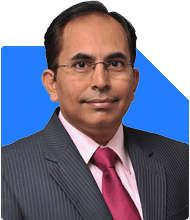Should I Withdraw 5% from My Mutual Funds Now?
Ramalingam Kalirajan |8913 Answers |Ask -Follow
Mutual Funds, Financial Planning Expert - Answered on Mar 21, 2025
He has an MBA in finance from the University of Madras and is a certified financial planner.
He is the director and chief financial planner at Holistic Investment, a Chennai-based firm that offers financial planning and wealth management advice.... more

I'd like to withdraw around 5% of my portfolio in mutual funds for an expense. As a long-term investor who started investing in 2015 and continues with SIPs, is it advisable to withdraw this amount during the current downturn?"
Timing the market can be difficult, even for experienced investors.
You have been investing since 2015, which shows commitment.
SIPs ensure rupee-cost averaging, benefiting from market volatility.
The current downturn may not be the best time to withdraw.
Impact of Market Downturn on Withdrawal
Equity funds fluctuate based on market trends.
During a downturn, selling means locking in lower values.
If the market recovers, you might miss potential gains.
A partial withdrawal affects long-term compounding.
Assess if the withdrawal can be delayed.
Alternative Ways to Meet Expenses
Use surplus cash, if available, to avoid redeeming investments.
Consider liquid funds for short-term needs.
If you have dividends from funds, use them instead of withdrawing capital.
Emergency funds or savings accounts can be better options.
Selecting the Right Fund for Redemption
Avoid selling funds that are currently underperforming.
Look at funds that have met targets or are overweight in your portfolio.
If you hold sectoral or thematic funds, check their performance outlook.
Prioritize redeeming funds with minimal tax impact.
Tax Implications of Selling Mutual Funds
Long-term equity gains above Rs. 1.25 lakh attract 12.5% tax.
Short-term equity gains are taxed at 20%.
Debt mutual funds are taxed as per your income slab.
Consider splitting the withdrawal to reduce tax liability.
Maintaining Your Long-Term Goals
Withdrawing 5% is manageable but can delay wealth accumulation.
Ensure SIPs continue without disruption.
Reinvest when possible to recover lost growth.
Avoid frequent withdrawals to maintain portfolio stability.
Finally
Selling during a downturn is not ideal unless unavoidable.
Explore alternatives before redeeming mutual funds.
Choose the least disruptive fund to sell if necessary.
Keep your long-term financial goals in focus.
Best Regards,
K. Ramalingam, MBA, CFP,
Chief Financial Planner,
www.holisticinvestment.in
https://www.youtube.com/@HolisticInvestment
You may like to see similar questions and answers below
Ulhas Joshi | Answer |Ask -Follow
Mutual Fund Expert - Answered on Dec 14, 2023
Ramalingam Kalirajan |8913 Answers |Ask -Follow
Mutual Funds, Financial Planning Expert - Answered on Apr 30, 2024
Ramalingam Kalirajan |8913 Answers |Ask -Follow
Mutual Funds, Financial Planning Expert - Answered on May 09, 2024
Milind Vadjikar | Answer |Ask -Follow
Insurance, Stocks, MF, PF Expert - Answered on Nov 16, 2024
Janak Patel | Answer |Ask -Follow
MF, PF Expert - Answered on Jan 23, 2025
Radheshyam Zanwar |3224 Answers |Ask -Follow
MHT-CET, IIT-JEE, NEET-UG Expert - Answered on Jun 13, 2025
Dr Karan Gupta |8 Answers |Ask -Follow
International Education Counsellor - Answered on Jun 13, 2025
Dr Karan Gupta |8 Answers |Ask -Follow
International Education Counsellor - Answered on Jun 13, 2025
Dr Karan Gupta |8 Answers |Ask -Follow
International Education Counsellor - Answered on Jun 13, 2025
Dr Karan Gupta |8 Answers |Ask -Follow
International Education Counsellor - Answered on Jun 13, 2025
Radheshyam Zanwar |3224 Answers |Ask -Follow
MHT-CET, IIT-JEE, NEET-UG Expert - Answered on Jun 13, 2025

Here is the preference order for you: (1) IIT Dharwad (2) IIIT Bangalore (3) IIT Palakkad
Best of luck to you.
Follow me if you like the reply. Thanks
Radheshyam
Radheshyam Zanwar |3224 Answers |Ask -Follow
MHT-CET, IIT-JEE, NEET-UG Expert - Answered on Jun 13, 2025
Dr Upneet Kaur |44 Answers |Ask -Follow
Marriage counsellor - Answered on Jun 13, 2025
Radheshyam Zanwar |3224 Answers |Ask -Follow
MHT-CET, IIT-JEE, NEET-UG Expert - Answered on Jun 13, 2025
Radheshyam Zanwar |3224 Answers |Ask -Follow
MHT-CET, IIT-JEE, NEET-UG Expert - Answered on Jun 13, 2025
























